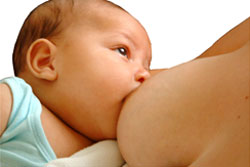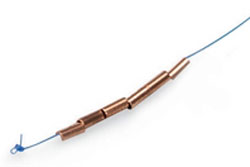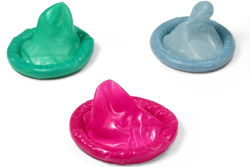- Introduction to contraception after childbirth
- Contraceptive choices for non-breastfeeding women
- Contraceptive choices for breastfeeding women
Introduction to contraception after childbirth

There are many considerations a woman must make about contraceptive use after childbirth. In particular, the woman must decide which contraceptive method to use and when to start using contraception. A number of factors will influence these choices. The factors which are most important in determining the best contraceptive method to use and the appropriate time to begin using it are:
- whether or not the woman is breastfeeding; and
- if breastfeeding, how often she is breastfeeding and whether or not the baby is given any other food in addition to breastmilk.
Women who are fully or partially breastfeeding cannot use all contraceptive methods, although there are many options available to them.
Contraceptive choices for non-breastfeeding women
Women who are not breastfeeding can safely use all contraceptive methods. However, women who chose to use combined hormonal contraceptive methods, including contraceptive pills, injections, patches and vaginal rings, should delay use until three weeks after childbirth. In this period the woman’s risk of developing blood clots in her veins is increased, and using combined hormonal contraceptives further increases the risk of blood clots.
Contraceptive choices for breastfeeding women
Women who are breastfeeding can safely used a number of contraceptive methods, including:
- natural and barrier methods;
- tubal ligation;
- intrauterine devices; and
- progesterone-only hormonal contraceptives.
Combined hormonal contraceptives are not recommended for use in breastfeeding women until at least six months after childbirth, as using these methods whilst breastfeeding may interfere with breast milk production and also reduce the quality of breast milk.
Natural methods
Lactational amenorrhoea

More information on lactational amenorrhoea.
Fertility awareness methods
Fertility awareness contraceptive methods rely on a woman monitoring bodily changes throughout the menstrual cycle so that she can identify when she is ovulating and fertile. Most fertility awareness methods require regular menstrual cycles for effective use and therefore cannot be used immediately after childbirth.
More information on fertility awareness methods.
However one fertility awareness method, known as the cervical mucus monitoring method, can be used reliably in the period immediately after childbirth, to identify the return of ovulation. According to this method the woman checks for cervical mucus (which indicates the onset of ovulation and fertility) on a daily basis. When cervical mucus is present she avoids sex or uses another contraceptive method to avoid pregnancy.
More information on cervical mucus monitoring.
Withdrawal
Withdrawal is a contraceptive method in which intercourse is interrupted to enable the male partner to withdraw his penis from the vagina prior to ejaculation. In doing so, egg and sperm are prevented from meeting and pregnancy is avoided. Withdrawal can be used safely during breastfeeding. While this is one of the least effective methods of contraception, it still provides a high level of protection compared to no contraception at all.
More information on the withdrawal method.
Long term or permanent, non-hormonal methods
Copper bearing intrauterine devices

IUDs are safe for use in the postpartum period and during lactation. Studies have shown that copper IUDs do not affect breast milk production or increase the concentration of copper in the breast milk. An IUD can be inserted as soon as 10 minutes after childbirth.
More information on IUDs.
Tubal ligation
Tubal ligation is a permanent contraceptive method in which a woman’s fallopian tubes are tied off (ligated). Once the tubes have been tied, pregnancy is prevented as eggs are no longer released into the fallopian tubes where they can be fertilised. Tubal ligation is a surgical procedure requiring anaesthesia, however women who are breastfeeding can still safely undergo the surgery. They should:
- breastfeed their infant immediately before anaesthesia is performed to minimise the length of time the baby needs to fast for;
- inform the doctor who is administering the anaesthetic that they are breastfeeding so that an anaesthetic which is appropriate for use by breastfeeding women can be chosen; and
- resume breastfeeding only once they are fully awake and alert.
More information on tubal ligation.
Progesterone only hormonal methods
The World Health Organisation recommends that breastfeeding women do not use oestrogen-containing hormonal contraceptives for at least six months after childbirth as they reduce the quality of breast milk quality. Previously concerns have also been raised about the possibility that progesterone-only hormonal contraceptive methods may increase the amount of progesterone in breast milk, and that this may be dangerous for the breastfed infant, whose liver and kidneys are too immature to metabolise the progesterone. However, numerous studies of progesterone-only methods have now been conducted, and no evidence that their use causes kidney or liver damage in breastfed infants has been found.
Progesterone only contraceptive methods, as the name suggests, contain progesterone as the only hormone. Like combined hormonal methods, they are highly effective in preventing pregnancy and are most effective when used by breastfeeding women as they add to the natural contraceptive protection of breastfeeding. The World Health Organisation recommends the use of progesterone only methods for breastfeeding women who gave birth at least six weeks previously. In the first six weeks after childbirth breast milk production patterns are still being established and progesterone-only methods are not recommended because they may interfere with breast milk production.
The progesterone-only hormonal methods which can be used safely during lactation and are available in Australia are:
- progesterone only pill or mini pill;
- progesterone-only injection (Depo Provera);
- contraceptive implant (Implanon);
- levonorgestral intrauterine system (Mirena).
Barrier methods

Male and female condoms also provide the additional benefit of protecting against sexually transmitted infections (STIs) and are thus particularly suitable for women who have partners of unknown STI status.
Barrier methods can be used safely during lactation and include:
- male condoms;
- female condoms;
- diaphragm (although women must delay until six weeks after childbirth to have the device fitted, when uterine involution has occurred or the uterus has returned to its normal size);
- spermicides; and
- cervical caps.
More information
 |
For more information on different types of contraception, male and female anatomy and related health issues, see Contraception. |
References
-
Family planning: A global handbook for providers [online]. World Health Organization; 2007 [cited 20 June 2009]. Available from: [URL link]
- WHealth benefits of family planning [online]. World Health Organization; 1995 [cited 24 June 2009]. Available from: [URL link]
- 2002 PRAMS Surveillance Report: Multistate exhibits – Post partum contraceptive use [online]. Centers for Disease Control and Prevention; 2006 [cited 8 August 2009]. Available from: [URL link]
- Germano E, Jenning V. New approaches to fertility awareness based methods: incorporating the standard days and two days methods into practice. J Midwifery Women’s Health. 2006;51:471-7.
- King J. Contraception and lactation. J Midwifery Women’s Health. 2007;52(6):614-20.
- Progesterone-only contraceptive use during lactation and its effects on the neonate [online]. World Health Organization; 2009 [cited 20 June 2009]. Available from: [URL link]
- Contraception: A guide to help you choose [online]. Marie Stopes International Australia; 2007 [cited 1 July 2009]. Available from: [PDF]
All content and media on the HealthEngine Blog is created and published online for informational purposes only. It is not intended to be a substitute for professional medical advice and should not be relied on as health or personal advice. Always seek the guidance of your doctor or other qualified health professional with any questions you may have regarding your health or a medical condition. Never disregard the advice of a medical professional, or delay in seeking it because of something you have read on this Website. If you think you may have a medical emergency, call your doctor, go to the nearest hospital emergency department, or call the emergency services immediately.







